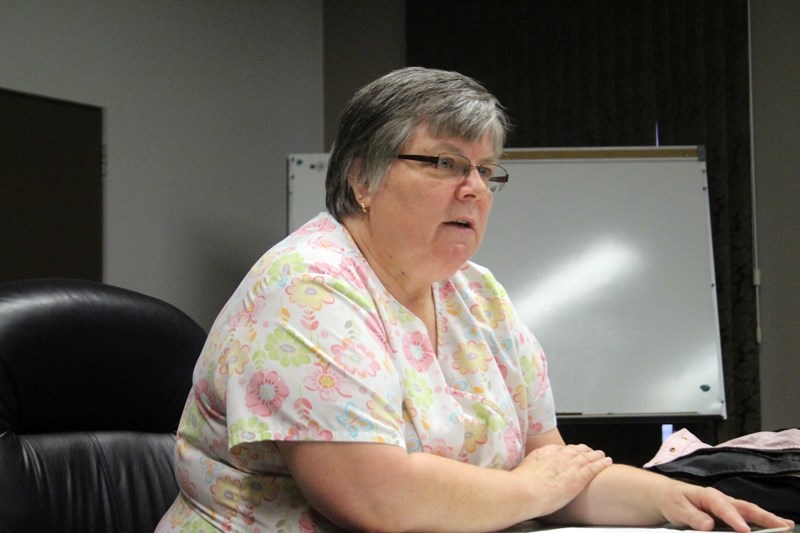Citing what she described as a health-professional related crisis in 2007, Barrhead resident Rita Lyster wants town and county council to take a more active role in a committee for the rural physician action plan [RPAP].
That was the gist of her presentation to county council, where the causes and effects of doctor burnout were described, at its meeting Nov. 1.
Lyster said while the RPAP committee has been informal up to now, the time is coming when the community will face a new crisis.
“We have a pending crisis similar to the one we experienced in 2007 and we need both councils to be aware of this,” she said.
“Part of it is due to our structure within Alberta Health Services (AHS). We used to have a board that could provide input, but we no longer have that avenue and because AHS has become a provincial entity focusing on urban centres, it has become detrimental to their rural counterparts.”
Organizations such as the RPAP committee are good for the community, she said.
“I think we need to support them, but it should be you guys going to these conferences, not me. I would urge you to talk to your counterparts in other municipalities on this issue.”
According to Lyster, Barrhead currently has nine physicians with five operating out of one clinic and four out of the other.
“Last year we had 2,000 emergency room (ER) visits,” she said.
“When somebody visits emergency, there is a $500 price tag attached because that is the granting applied to the hospital, by the province, to pay for staffing the ER department. That’s $11 million. Of that figure, 62 per cent of that funding was allocated for assigned tasks on a scale of one to five, with one being of highest priority. In other words, that means $6.8 million was used for those purposes.”
The reason people go to the emergency room, she said is because patients cannot get in to see a doctor.
“It is a convoluted, messed-up system and having another physician would alleviate some of this problem, but it isn’t a long-term solution. Neither is having a walk-in clinic,” she said.
Primary Care Networks, a subject previously reported in the Barrhead Leader, were invented a decade ago as a team-based approach to deliver health care, she said.
“All around us there are PCNs, but Barrhead is not part of one. Physicians are the key-holders to this and they are not interested. There have been information meetings set up by myself and Luke Brimmage [Westlock Aspen PCN executive director], but nobody turns up.”
RPAP was formed in 1992 to address professional and lifestyle issues confronting physicians in rural practice.
“They [RPAP] discovered that it is not just an issue of recruitment, but retention of physicians. This committee has operated on the fringes for some time and there hasn’t been any involvement, community-wise for years.”



